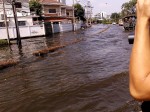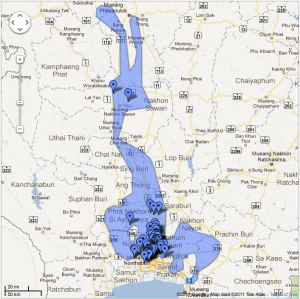A positive development concerning Thailand’s relationship with human rights is the country’s increasing membership of United Nations treaties on the issue.
Several years ago, the country became a party to the International Convention on the Elimination of All Forms of Racial Discrimination, and last month a large inter-sectoral delegation from Thailand appeared before the convention’s Committee on the Elimination of Racial Discrimination (CERD) to discuss the implementation process.
The recommendations from CERD became public very recently, and they deserve to be disseminated widely to the public.
Like many other countries, Thailand is culturally diverse. Interestingly, the rise of the nation state has led to official classification of different groups under such titles as ”rootless persons”, ”aliens”, ”illegal immigrants”and ”persons with status problems”.
While society is generally seen as tolerant, there has been a tendency on the part of authorities to categorise people into ethnic groups. There is thus an intriguing interface with the international perception of human rights whereby those rights, such as the right to life and humane treatment based on non-discrimination, are inherent in all persons irrespective of such categorisation.
CERD was briefed about the various laws, policies and practices in Thailand. These included the 2007 constitution with its reference to guarantees against discrimination, including in regard to race. It heard about the issues of the hill tribes, the southern problem, migrant workers and displaced persons from neighbouring countries. Yet its recent recommendations are witness to elements of ambivalence in regard to the country’s record, which requires key reforms.
First, the challenge of commitment to international standards. When Thailand became a party to the convention, it made an interpretative declaration that the country does not recognise ”any obligation beyond the confines of its constitution and law”.
It also entered two reservations not to accept two of the convention’s provisions. The first reservation relates to Article 4, which stipulates the obligation to enact laws prohibiting the dissemination of all ideas based on racial superiority and hatred (hate speech). The second reservation relates to Article 22, which confers on the International Court of Justice jurisdiction to deal with disputes concerning CERD.
CERD stated in its recommendations to Thailand that the interpretative declaration is incompatible with the treaty. It also advised that the reservation to Article 4 should be withdrawn. Clearly, the message is that in making treaties Thailand, or any other country, should not make unilateral declarations of an overly broad nature. Moreover, the country needs a specific law to prohibit racial discrimination as well as legal provisions against hate speech.
Second, the issue of classification and categorisation. CERD expressed its concern at Thailand’s categorisation of the groups in society. It recommended the principle of self-identification, namely that various groups should be able to self-identify and current terminologies should be revised to avoid discrimination. This is particularly linked with the diversity of ethnic groups and the possibility of self-identification as indigenous people.
Third, the realisation of civil and political rights. The committee welcomed new laws such as the 2008 birth registration law that now ensures birth registration to all persons born in Thailand irrespective of parentage and origin. However, it urged the country to take effective measures to overcome the obstacles facing the acquisition of citizenship while welcoming the target set by the authorities to grant legal status to about 300,000 persons in a time frame of three years.
Another concern revolved around the implementation of national forestry and environment protection laws that sometimes leads to the displacement of ethnic groups living in forests, including those who have been there for generations. The advice from CERD is that these laws need to be reviewed and that the right of ethnic groups to free and informed consent in decisions concerning them needs to be respected.
Fourth, the situation of women, particularly those in the South. The committee noted that the women of the South often have to face double discrimination (as women and women from the South). It called for ”equal treatment and non-discrimination of Malayu women”.
Fifth, the application of special laws in the southern border provinces. It is generally known that various emergency laws are applied in these provinces, including martial law, the emergency decree and the Internal Security Act as well as the Criminal Code, with many constraints on civil liberties.
CERD raised the issue of racial profiling in the application of these laws as well as violence against suspects such as torture and enforced disappearances. It invited Thailand to review these laws for consistency with international standards and to investigate all allegations of abuses and prosecute those responsible.
Sixth, the presence of migrant workers. CERD called for more protection of migrant workers. A key recommendation is that the country should ”abandon the proposal to return pregnant migrant women to their country of origin to give birth” and to respect the human rights of migrants, including access to health care for documented and undocumented migrant women.
Seventh, action against human trafficking. While Thailand now has a comprehensive law against such trafficking, the committee observed that the country needs to address the root causes of the phenomenon and prosecute traffickers effectively.
Eighth, protection and assistance of asylum-seekers and refugees. The committee was informed by the Thai delegation about various screening procedures under the form of provincial admission boards that help to differentiate between cases needing international protection and other cases.
CERD called for legislation and procedures to protect refugees and asylum-seekers in line with international human rights standards, which offer protection to cases escaping from their country of origin due to persecution and warfare. It added that measures should be taken to prevent any further expulsion of Rohingya (the Muslim group who have had to leave Myanmar in search of protection) seeking asylum and to ensure their access to the UN High Commissioner for Refugees. It also advocated accession to the various treaties on refugees and reduction of statelessness.
While the recommendations of international human rights bodies such as CERD are not binding, they are highly persuasive and deserve to be followed up effectively. The added value of the whole process is that it invites transparency and scrutiny through the international lens that provides a more objective analysis than purely national perspectives. Indeed, it is a means to an end, inviting discourse between a multiplicity of stakeholders _ government and non-government _ and comprehensive action for the betterment of all persons in the country, here and elsewhere, irrespective of status, origin and label.
Vitit Muntarbhorn is a professor of law at Chulalongkorn University, Bangkok. He has helped the UN in a variety of positions, including as expert, consultant and special rapporteur. The views expressed in the article are personal.
Published: 5/09/2012 at 02:36 AM in Bangkok Post










